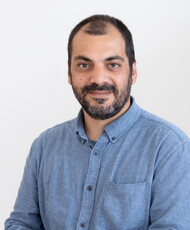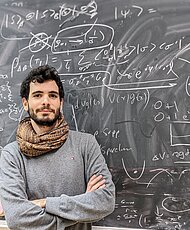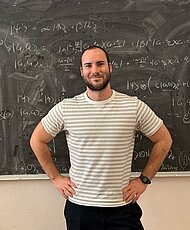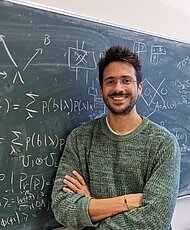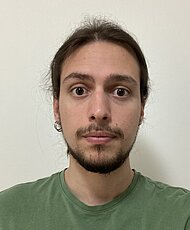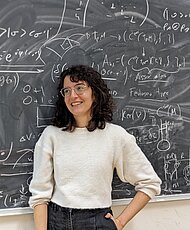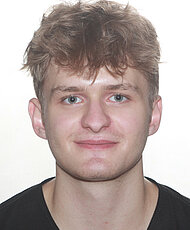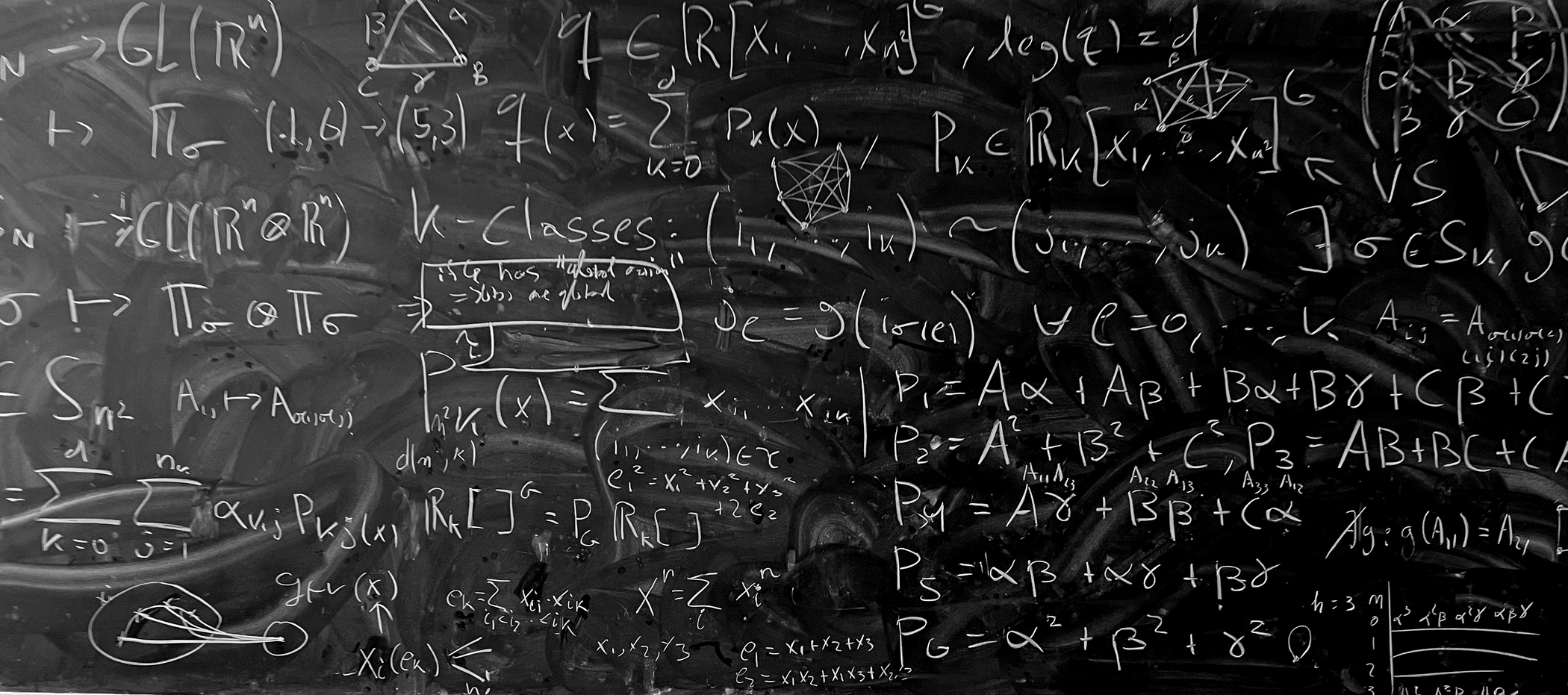
In our research group, we focus on the set of foundational issues arising in the study of phenomenologically relevant physics on quantum spacetime, with a particular emphasis on effects that may be detectable in the future in a 'table-top' setting. The idea of evidencing the quantum nature of the gravitational interaction on the 'laboratory bench', goes back to a thought experiment put forward by Feynman in 1957: to detect the 'hallmark of quantumness', entanglement, being generated through the gravitational interaction.
More in general, what is attempted in this field of study is to arrive within a couple of decades at novel empirical data which are of major epistemological significance for the foundations of physics, implying the falsification of general relativity and providing evidence for quantum gravity. Given the extraordinary claim, the supporting line of argument requires extraordinary care. Therefore, theoreticians, such as ourselves, have quite a lot to do. In a sense, the effort to understand the epistemological content of proposed table-top quantum gravity protocols becomes 'entangled' with hard questions at the foundations of physics.
As the search for quantum gravity phenomenology is fusing with the experimental race to develop quantum sensing technics that leverage quantum information theory, a lively cross--disciplinary discussion is taking place at the interface of quantum foundations and quantum gravity. Our research group has had significant contributions to the development of the nascent research field of 'table-top' quantum gravity, while developing new methods of understanding physics on a quantum spacetime.
Witnessing spacetime in quantum superposition
In the works [1] and [2] we showed that entanglement is created locally in spacetime, calculated a signature effect and suggested a possible protocol to detect it. These works clarified the interplay between entanglement and spacetime locality in quantum field theories, and demonstrated that entanglement through gravity can be understood as evidence for a discrete and respectively continuous quantum superposition of geometries, an interpretation first argued in [3]. The interpretation of entanglement through gravity as spacetime being set in superposition was also argued from a different point of view in [4], where report the result of a simulation of the effect using a photonic platform. A popularised account of the latter work is given in \href{https://phys.org/news/2024-06-quantum-behavior-gravity-photonic-simulation.html}{phys.org}.
In [5] we proposed to detect entanglement generation between superpositions of rotational energies. This is an effect with no analogue in electromagnetism, because there is no superposition of charge. In gravity, an effective superposition of mass is possible through the mass energy-equivalence, sourcing a superposition of spacetimes. We showed that there exists an operational experimental regime in which decoherence can be avoided and, therefore, the required superpositions of relativistic rotation rates can be achieved.
The above discussed proposals for table-top quantum gravity tests present substantial technical challenges due to the need for preparing and isolating the system from the environment in order to avoid decoherence and detect highly non-classical quantum states. In [6] we explored a completely different approach: whether a quantum gravitational effect could be detected through thermodynamic observables, thereby avoiding the need for coherent control and the application of quantum operations and measurements. As a case study, we considered the self-gravitation contributions to the heat capacity of a Bose-Einstein condensate, and showed that precisely measuring it can distinguish between classical gravity and quantum gravity. The results in [6] build on the techniques presented in [7], which demonstrated that Gaussianity production in condensates can witness quantum gravity. A popularised account of [7] can be found at \href{https://phys.org/news/2021-02-quantum-collaboration-gravity-mysteries-universe.html}{phys.org}.
References:
[1] MC, A. Di Biagio, M. Aspelmeyer, B. Caslav, C. Rovelli, R. Howl “Locally mediated entanglement in linearised quantum gravity.” Phys. Rev. Lett. 130, 100202 (2022), arXiv:2202.03368
[2] O. Bengyat, A. Di Biagio, M. Aspelmeyer, MC, “Gravity Mediated Entanglement between Oscillators as Quantum Superposition of Geometries .” Phys. Rev. D (2024), arXiv:2309.16312
[3] MC, C. Rovelli, “On the possibility of laboratory evidence for quantum superposition of geometries,” Phys. Lett. B 792 64-68 (2019), arXiv:1808.05842
[4] E. Polino, B. Polacchi, D. Poderini, I. Agresti, G. Carvacho, F. Sciarrino, A. Di Biagio, C. Rovelli, MC “Photonic Implementation of Quantum Gravity Simulator . Advanced Photonics Nexus ” Vol. 3 No. 3 (2024, Featured on Cover), arXiv:2207.01680
[5] G. Higgins, A. Di. Biagio, M. Christodoulou, “Gravitationally Mediated Entanglement with Superpositions of Rotations.” Phys. Rev. D (2025), arXiv:2403.02062
[6] T. Strasser, M. Christodoulou, R. Howl, C. Brukner, “Quantum Gravity Signature in a Thermodynamic Observable.” Accepted for Publication in Physical Review Research (2025), arXiv:2412.17460
[7] R. Howl, V. Vedral,MC ,D. Naik, C. Rovelli, A. Iter “Non-Gaussianity as a Signature of a Quantum Theory of Gravity.” Phys. Rev. X Quantum. 2, 010325 (2021), arXiv:2004.01189
Are there 'atoms of time’?
It is an old idea that spacetime should have granular aspects at the Planck scale, analogous to the short scale photon structure of the electromagnetic field. While the Planck length and the Planck energy might have a clear physical meaning, the physical meaning of Planck mass (micrograms) has remained more elusive. In [1,2] we considered the possibility that Planck mass determines the scale at which interference between superimposed geometries affected by a quantum mass may allow for the discreteness of time to be detected. By interpreting entangling phases arising through gravity in general relativistic terms, we showed that the effect arises due to a minuscule relative time dilation experienced between the quantum branches. This physical time difference can be tuned to be at the Planck time scale, when the mass is near the Planck mass.
Building on this intriguing interplay between Planck time and Planck mass, we suggested the ambitious possibility that a table-top protocol could search for the discreteness of time. We examined the feasibility of this idea and concluded, surprisingly, that it is not too far removed from current capabilities.
In ongoing work, we are investigating alternative ways to realise this experiment using superfluid interferometers. While these would be difficult experiments, the return would be extremely high in case of a positive result, demonstrating, in a sense, the existence of 'atoms of time'.
References:
[1] MC, A. Di Biagio, P. Martin-Dussaud, “An experiment to detect the discreteness of time.” Quantum 6, 826 (2022), arXiv:2007.08431
[2] MC, C. Rovelli, “On the possibility of experimental detection of the discreteness of time,” Frontiers in Physics, Volume 8, 207-5 (2020), arXiv:1812.01542
Is Dark Matter tiny black/white holes?
In [1], we propose a remarkable possible application of table-top quantum gravity techniques to the search of dark matter: the possibility that dark matter is composed mainly of Planck mass purely gravitationally interacting particles. A brief popularized account for this work can be found in \href{https://phys.org/news/2024-10-planck-scale-dark-leveraging-quantum.html}{phys.org}.
This candidate for dark matter particles is motivated by calculations in loop quantum gravity, which suggest the possibility of quantum tunneling of the geometry near the end of the Hawking evaporation [2,3,4]. This phenomenon can be completed to a compelling scenario for the full cycle of the life of a black hole, whereby a black hole's formation, evaporation, tunneling to a white hole once it reaches Planck mass, and final slow decay, form a unitary process that does not violate any known physics. These studies substantiate the more general idea that Planck mass particles that are of Planck length size would be expected to arise, by giving a specific mechanism of their creation [5].
The work [1] is also remarkable for the suggested use of macroscopic quantum systems for quantum sensing of gravity. The idea leverages very high sensitivity to quantum phase shifts in an array of Josephson junctions. The result is quite a surprise, that an observable signal can be generated in this way, since the mass of the electron is small. The reason this can work is because a very large number of Josephson junctions of minuscule dimensions can be manufactured and connected in series.
References:
[1] MC, A. Perez, C. Rovelli, “Detecting Gravitationally Interacting Dark Matter with Quantum Interference.” Phys. Rev. Lett. 133 111001 (2024), arXiv:2309.16312
[2] MC, F. D’Ambrosio “Characteristic Time Scales for the Geometry Transition of a Black Hole to a White Hole from Spinfoams ”. Class. and Quant. Grav. 41 195030 (2024), arXiv:1801.03027
[3] MC, F. D’Ambrosio, C. Theofilis, “Geometry Transition in Spinfoams”. Class. and Quant. Grav. 41 195029 (2024), arXiv:2302.12622
[4] MC, C. Rovelli, S. Speziale and I. Vilensky, “Planck star tunneling time: Astrophysically Relevant Observable from Background-free Quantum Gravity,” Phys. Rev. D 94 8, 084035 (2016) arXiv:1605.05268.
[5] E. Bianchi, MC, F. D’Ambrosio, H. Haggard, C. Rovelli “White Holes as Remnants: A Surprising Scenario for the End of a Black Hole,” Class. Quant. Grav. 35 no. 22, 225003 (2018) arXiv:1802.04264
Does the world split in spatially separated subsystems?
The notion of 'locality of interactions' is a central principle in physics. When spacetime is dynamical, and even more so when it obeys quantum mechanics, what 'location' means becomes ambiguous. In quantum information, the notion of 'locality' employed, called subsystem or circuit locality, is quite different from the notion of locality employed in quantum field theories. Understanding the relation between these notions of locality is of central interest for applying quantum information methods to quantum gravitational physics. In [1] we show that the subsystem locality employed in quantum information can only be approximately deduced from the principle of microcausality of quantum field theory. Demanding subsystem locality or circuit locality essentially amounts to the physical regime typically relevant in quantum optics: it amounts to assuming quantum controlled fields that are classical per quantum branch, essentially a type of 'Schrödinger cat states'.
Because physical theories include gauge symmetries, the situation becomes even worse, as was argued in [2]. There seems to be little hope that the entire physical content of relativistic quantum field theories could be encoded in subsystem local operations. Indeed, it appears that 'degrees of freedom' that behave quantum mechanically need not be local in spacetime. In ongoing work, we are examining whether a sharp no-go result can be formulated stating that subsystem locality as a fundamental notion should be abandoned.
References:
[1] A. Di Biagio, R. Howl, C. Brukner, C. Rovelli, MC, “Relativistic locality can imply subsystem locality.” arXiv:2305.05645
[2] MC, A. Di Biagio, R. Howl, C. Rovelli “Gravity entanglement, quantum reference systems, degrees of freedom.” Class. Quant. Grav. 40 047001 (2023), arXiv:2207.03138
Observables in a dynamical and quantum spacetime
In [1] we proved a foundational result in general relativity, giving a sharp formulation of the 'problem of observables'. The latter refers to a set of conceptual and technical issues that make it difficult to understand the quantities of the theory that correspond to physically measurable quantities. We prove that in a precise sense of 'definable', provided by a branch of logic called descriptive set theory, observables ('diffeomorphism-invariants') are {\it not} definable. This is the first such result about this decades--long problem.
These mathematical difficulties notwithstanding, a related intriguing aspect of observables in general relativity, is that they are expected to be 'global'. The above mentioned no-go result, is contrasted by a "go" recent result we arrived at by studying discrete formulations of general relativity. In [2] we show how the problem of observables can be fully resolved when we consider theories with states corresponding to weighted graphs: discrete structures with weights assigned to its edges and nodes, mimicking the fields that live on top of the manifold in general relativity. Theories of quantum gravity are often formulated in this way, in terms of weighted graphs, because the discreteness seen in quantum theory is expected to give rise to a fundamentally discrete cosmos. We demonstrated how global objects---graph invariants---can systematically capture complete local information, providing a constructible resolution of the problem of observables for discrete general relativity.
The formalism developed in [2] gives a concrete implementation of ideas presented in [3] a work that deals with defining the notion of superpositions of graphs. The formalism in [3]serves as the basis on which to build the state space for quantum circuit paradigms that admit superpositions of circuits. Similarly, the description of quantum spacetime is expected to involve a superposition of graphs. Indeed, the formalism developed in [2] can be applied also to a kind of quantum geometries---spin networks---, providing a concrete setting in which to study superpositions of quantum geometries.
Superpositions of macroscopic geometries are also the subject of recent intense study in the context of indefinite causal structures and quantum reference frames. A notable work in this spirit is [4], which demonstrates a prototype use of quantum changes of coordinates to identify a well defined quantum observable on a superposition of spacetimes.
The above techniques taken together provide a way to define the 'degrees of freedom' of spacetime as being 'glocal functions', global searches that identify local features. This is in contrast to spacetime local functions which are generally badly defined in the context of general relativity and even more so in quantum gravity. A line of investigation we are currently pursuing is to arrive at a suitable notion of quantum graphs and extend it to a framework for studying observables on a quantum spacetime. The aim is to provide a toolbox to analyze physics on a quantum spacetime and in particular shed light on the role of entanglement in quantum geometry.
References:
[1] A.Panagiotopoulos, G.Sterling, MC “Incompleteness Theorems for Observables in General Relativity.” Phys. Rev. Lett. 131 17 171402 (2023), arXiv:2202.03368
[2] E. Broukal, A. Di Biagio, C. Brukner, M. Christodoulou, “Observables are glocal.”, arXiv:2508.02346
[3] P. Arrighi, MC, A. Durbec , “On quantum superpositions of graphs, no-signalling and covariance.” Journal of Physics A: Math. Theor. 58 155303 (2025), arXiv:2010.13579
[4] A. de la Hamette, V. Kabel, MC, C. Brukner, “Quantum diffeomorphisms cannot make indefinite causal order definite.” Accepted for Publication in Physical Review Letters (2025), arXiv:2211.15685
Relative facts and interpretation of quantum theory
Does quantum theory apply to everything? And if so, can an observer be in a quantum superposition of having observed different outcomes? Is the outcome of a quantum experiment relative to the observer? These questions are at the core of quantum theory's measurement problem.
In [1], by analysing the so-called "extended Wigner's friend scenario," we showed that assuming quantum theory can be applied to arbitrary systems, including an observer, and insisting that observations yield objective outcomes puts in severe difficulty our most general notion of causal explanation.
In [2], we analyse the consistency of the notion of relative facts within the relational interpretation of quantum mechanics (RQM), an interpretation that seeks an understanding of quantum theory applicable to all systems without resorting to a special notion of measurement (like textbook quantum mechanics does).
References:
[1] Relating Wigner’s Friend scenarios to Nonclassical Causal Compatibility, Monogamy Relations, and Fine Tuning, Yìlè Yīng, Marina Maciel Ansanelli, Andrea Di Biagio, Elie Wolfe, Eric Gama Cavalcanti. Quantum 8 (https://quantum-journal.org/papers/q-2024-09-26-1485/)
[2] On the consistency of relative facts, Eric G. Cavalcanti, Andrea Di Biagio, Carlo Rovelli. European Journal for Philosophy of Science 13 (https://link.springer.com/article/10.1007/s13194-023-00551-8)
Recommended reading:
- Facts are relative, Časlav Brukner. Nature Physics 16 (https://www.nature.com/articles/s41567-020-0984-8)
- Bell, Wigner, causal reasoning, and interpretations, Andrea Di Biagio. https://www.youtube.com/watch?v=L_sFmhs7fD4
- Stable Facts, Relative Facts, Andrea Di Biagio, Carlo Rovelli. 2006.15543 and Foundations of Physics 51 (https://link.springer.com/article/10.1007/s10701-021-00429-w)
Foundations of Quantum Field Theory
In Quantum Mechanics, predicted quantities typically take the form of properties of an instantaneous state at a finite time in non-relativistic spacetime. In relativistic Quantum Field Theory (QFT), historically predictions took the form of scattering amplitudes, which involve asymptotic states in the limit of infinitely early or late times when systems are infinitely far apart and therefore assumed free. This has served well for predicting the outcomes of scattering experiments, but more recently attention has turned to the question of how to model local measurements: experiments that involve measurements of relativistic quantum fields in local regions of spacetime [1]. This is an important issue in Relativistic Quantum Information, which is devoted to the theoretical and experimental treatment of information-theoretic processes with relativistic quantum systems. In the past few years, formal measurement theories have been developed for local measurements on systems represented using QFT [2]. Another area in which the representation of local measurements of quantum fields has become a pressing issue is tabletop quantum gravity. The recent debate about whether gravitationally-induced entanglement implies that gravity must be quantised also raises questions about how local measurements on quantum fields are modelled and interpreted.
In these directions, we investigate the foundations of QFT beyond the asymptotic scattering paradigm, asking questions about the locality structure of quantum fields and the QFT aspects of quantum information research.
References:
[1] Note on episodes in the history of modelling measurements in local spacetime regions using QFT, D. Fraser, M. Papageorgiou, EPJ H 48, 14 (2023)
[2] Eliminating the ‘impossible’: recent progress on local measurement theory for quantum field theory, M. Papageorgiou, D. Fraser, Found. Phys. 54, 26 (2024)
[3] Factorisation conditions and causality for QFT measurements, R. Simmons, M. Papageorgiou, M. Christodoulou, C. Brukner, arxiv:2511.21644 (2025)


